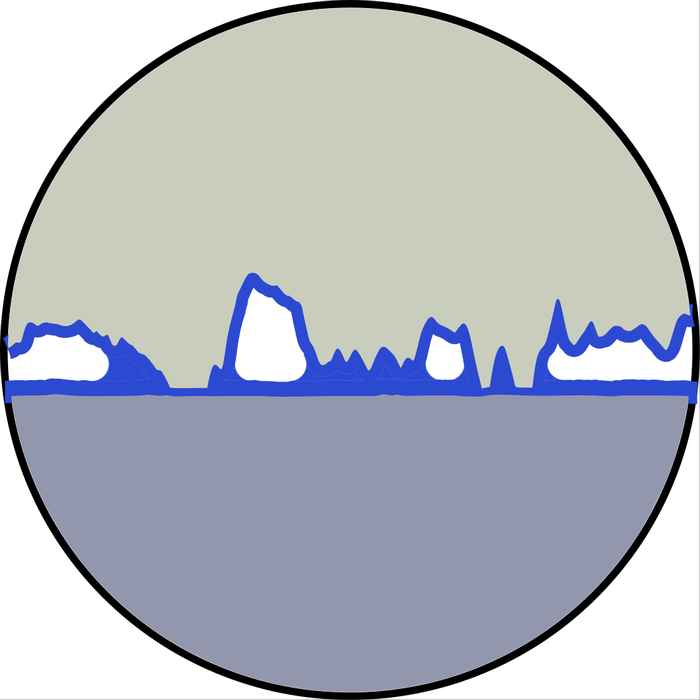Rougher is more slippery
Understanding roughness and friction at the nanoscale
9 February 2022

“Surfaces that are very smooth on a macroscopic level still have a certain amount of roughness in the form of nanometer sized peaks and valleys”, says ARCNL and UvA researcher Bart Weber, whose research group - Contact Dynamics - is focused on fundamental aspects of friction and wear relevant to nanolithography. “During chip production wafers are put in and out of the lithography machine several times, and each time they must be positioned with nanometer precision. Even the smallest deformation of the wafer caused by friction, can lead to positioning errors. Furthermore, wear can change the friction over time as a lithography machine handles millions of wafers each year.”
Contact area
Friction between two touching surfaces depends on many conditions both in the environment – like temperature or humidity – and in the surfaces themselves – like chemical composition or charge. Weber and his team are especially interested in surface roughness, which determines where and how much the surfaces actually touch each other.
“The contact area between surfaces is inherently hidden from view, making it difficult to access it experimentally. In collaboration with our colleagues at the UvA and the Université Paris-Saclay, we developed a unique setup that makes it possible to image the contact area with fluorescence microscopy”, he explains. “We immerse silicon-nitride spheres with varying surface roughness in a fluorescent fluid and then press them against a very flat transparent plate through which we can excite and see the fluorescent molecules between the surfaces. There is no fluorescence where they touch. As expected, a smoother surface results in a larger area of real contact.”
Smoother is stickier
Weber’s PhD student Feng-Chun Hsia combined these contact area experiments with friction measurements on the same spheres with a rheometer that measures friction by applying a torque on the touching surfaces. He found that in general the surface roughness and the area of real contact hardly affect the friction experienced by the touching surfaces. The friction coefficient (the ratio of the frictional force and the normal force pushing the surfaces together) is approximately the same. However, when roughness drops to just a few nanometers, the friction coefficient increases significantly.
“Due to air humidity, the surfaces are covered with thin water films of a few nanometers. Very smooth surfaces have a large area where they nearly touch. When the gap between them equals the size of the water film, the water molecules tend to pull the surfaces together. This is equivalent to the capillary effect of a drop of water that sucks two glass plates together in a conventional microscope”, Weber explains. “This capillary adhesion causes smooth surfaces to stick together and experience more friction.”
Friction prediction
Capillary adhesion was predicted for touching surfaces with nanoscale roughness, but Weber and his team were the first to have visualized this effect experimentally. “Because we could also match our contact area experiments with theoretical modelling of the contact area, we now have a predictive understanding of the interplay between contact mechanics, friction and capillary adhesion”, he says. “We have also gained an insight into how friction evolves when surface roughness wears off. Both are important for applications in precision positioning.”
Publication
Rougher is more slippery: How adhesive friction decreases with increasing surface roughness due to the suppression of capillary adhesion. Feng-Chun Hsia, Steve Franklin, Pierre Audebert, Albert M. Brouwer, Daniel Bonn, and Bart Weber, Phys. Rev. Research 3 (2021) 043204.